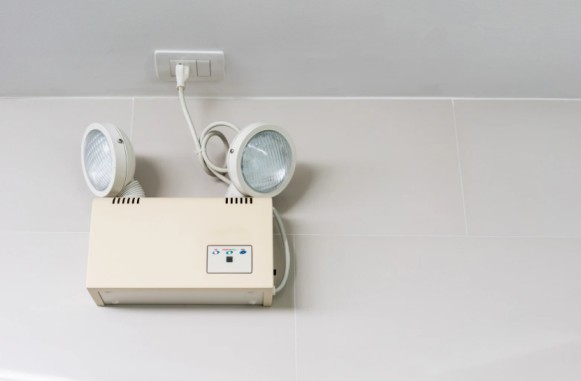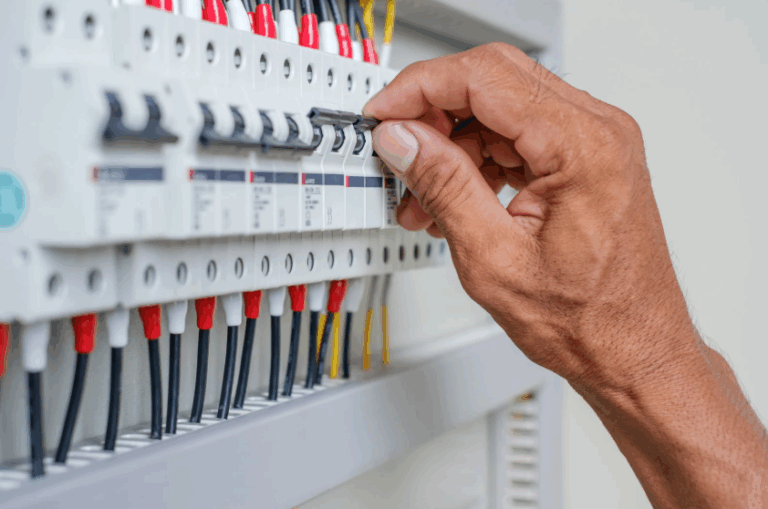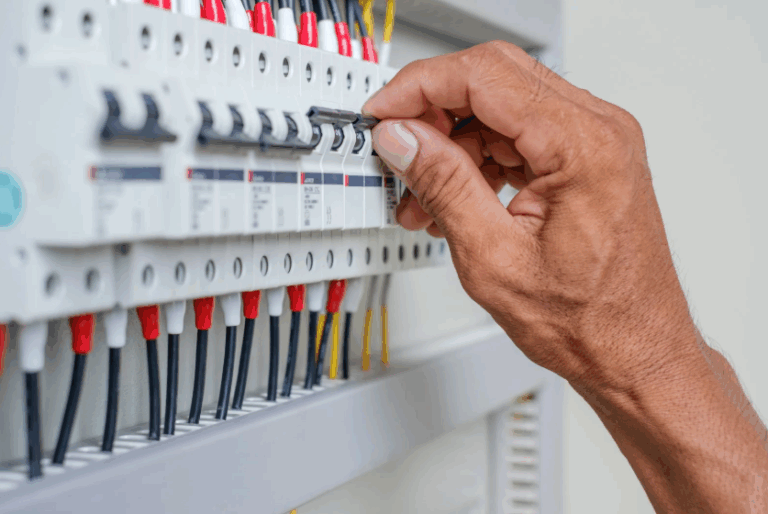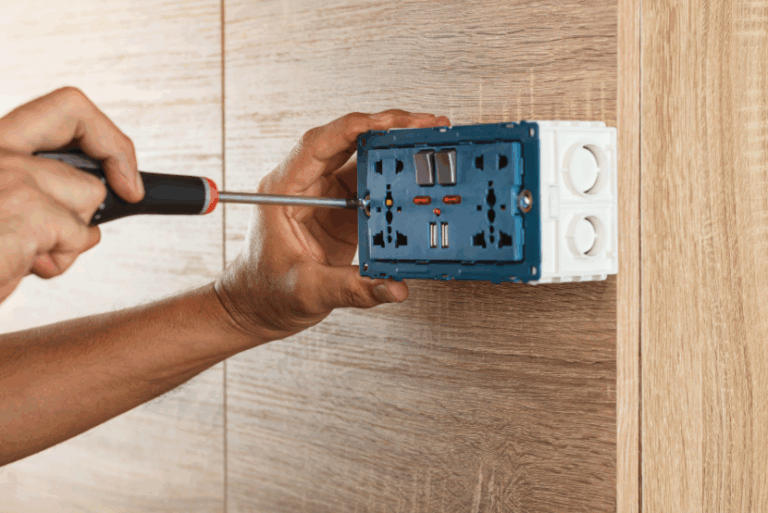If you’ve ever flipped a light switch only to find the room still dark, you know how frustrating it can be. A light not working can happen for many reasons, whether it’s as simple as a burnt-out bulb or something more complex like a tripped circuit breaker. Before calling an electrician, consider these troubleshooting steps to pinpoint and resolve the issue yourself. In this guide, we’ll walk you through the most common causes and solutions for when your light refuses to turn on.
Common Light Fixture Issues in Toronto Homes & Prevention Tips
- Loose Wiring: Loose wiring can cause the light to flicker or not turn on. Over time, vibrations from everyday activities can loosen connections.
- Prevention: Regularly check and tighten connections in ceiling and wall fixtures.
- Corrosion from Humidity: Toronto’s seasonal weather can affect light fixtures, particularly in humid areas such as bathrooms or basements. Moisture can corrode metal parts.
- Prevention: Install moisture-resistant fixtures and use bulbs rated for use in damp environments.
- Overheating: Using bulbs that exceed the fixture’s wattage can cause overheating, and in severe cases, fire hazards.
- Prevention: Stick to the manufacturer’s wattage guidelines and switch to energy-efficient LED bulbs.
Steps to Fix Your Light Fixtures
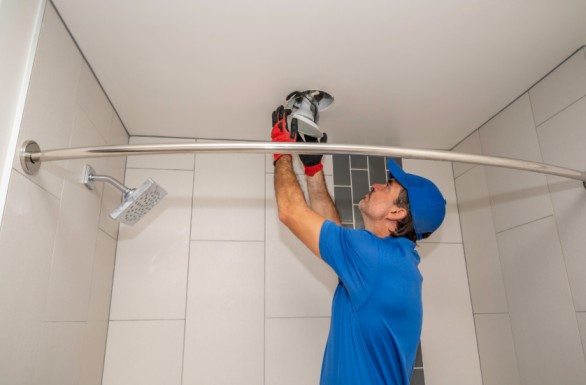
Before diving into any electrical repairs, safety should always be your top priority. Turn off the power to the fixture from the circuit breaker box, not just from the switch. This ensures that you’re not dealing with live wires while troubleshooting the fixture. Then follow the steps below:
- Check the Light Bulb
The most common reason a light doesn’t turn on is a burnt-out bulb.
- Make sure the bulb is screwed in tightly.
- Try replacing it with a new bulb.
- Test the old bulb in another fixture to confirm if it’s dead.
- Inspect the Light Switch
A faulty switch could prevent power from reaching the bulb.
- Flip the switch a few times to see if it works intermittently.
- If the switch feels loose, it may need to be replaced.
- Check the GFCI Outlet
Some rooms (bathrooms, kitchens, basements) may have a GFCI outlet that controls lights and plugs.
- Press the “Reset” button on the outlet.
- If the outlet tripped, resetting it could restore your light.
- Look at the Circuit Breaker
A tripped circuit breaker can cut power to your lights.
- Go to your breaker panel and look for switches in the middle position.
- Flip the tripped breaker to the OFF position, then back to ON.
- If it trips again, there may be an electrical issue that needs professional attention.
- Ensure Power Is Off Before Working
If you need to open the light switch or fixture, turn off the power at the breaker.
- Use a voltage tester to confirm the power is truly off.
- Never touch wires unless you’re certain that the electricity is turned off.
- Check the Wiring Connections
- Loose or faulty wires can prevent a light from working.
- Remove the switch cover carefully.
- Inspect for loose screws or frayed wires.
- Tighten electrical wiring connections and wrap them with electrical tape if necessary.
- Test or Replace the Switch
If connections look fine, but the light still won’t work:
- To check the switch, use a multimeter or a continuity tester.
- If it fails the test, replace it with a new switch (single-pole or three-way, depending on your setup).
- If It’s Still Not Working…
If the light still doesn’t turn on after replacing the switch, the problem may be:
- Wiring at the fixture
- A faulty outlet on the same circuit
- A deeper electrical issue
- In such cases, it’s best to call a licensed electrician to avoid risks.
When to Replace vs. Repair a Light Fixture
Repair: If the fixture is relatively new and the problem is minor (e.g., a faulty switch or loose wiring), repairing the fixture may be the best option. For minor issues, like a burnt-out bulb or damaged socket, it’s often cost-effective to repair.
Replace: If the fixture is old and parts are no longer available, or if the cost of repairs is higher than replacing the fixture, it’s time to replace it. Additionally, fixtures that have been damaged by moisture or fire should always be replaced to avoid safety risks.
When to Call a Professional in Toronto
If your light still refuses to turn on, or if you encounter issues like exposed wires, burning smells, or sparking, it’s time to call in a licensed electrician. Electrical system issues can be dangerous, and it’s essential to have them professionally inspected to ensure the safety of your home and business.
Choosing the Right Bulb for Your Toronto Home
Wattage:
Ensure that the bulb’s wattage doesn’t exceed the fixture’s rating. This helps prevent overheating and ensures adequate lighting.
Tip: Energy-efficient LED bulbs are ideal for most fixtures—they provide long-lasting light without the extra heat.
Type of Bulb:
- Incandescent: Traditional but energy-inefficient.
- CFL: More energy-efficient, but contains small amounts of mercury.
- LED: The most energy-efficient and durable option, making it the best choice for long-term lighting solutions.
How to Upgrade Your Light Fixtures
Upgrading your light fixtures can enhance the aesthetics of your space and improve energy efficiency.
- Energy-Efficient Lighting: Consider upgrading to LED bulbs and energy-efficient fixtures for improved energy efficiency. LEDs last longer, use less energy, and provide better lighting.
- Smart Lighting: Incorporate smart lighting options that enable remote control of the lights through an app or voice assistant. This can improve convenience and energy savings.
- Aesthetic Upgrades: Choose fixtures that match the style of your home. Consider modern, industrial, or vintage fixtures based on your home’s interior design.
Fixing Flickering LED Lights
If your LED lights flicker, here’s how to troubleshoot:
- Check Compatibility: Ensure that your LED bulb is compatible with dimmer switches. Non-compatible LEDs can flicker when used with specific dimmers.
- Inspect for Loose Connections: Check the socket and wiring for any loose connections.
- Replace the Bulb: If the LED light continues to flicker, it may be faulty and needs to be replaced.
DIY Electrical Safety Tips
- Turn Off the Power: Always turn off the power at the breaker before working with light fixtures or electrical connections.
- Use Insulated Tools: Use insulated tools to prevent accidental shocks when working with live wires.
- Wear Rubber Gloves: Wearing rubber gloves provides an extra layer of protection when handling electrical components.
- Test for Live Wires: Before touching any wires, use a non-contact voltage tester to verify they’re not live.
- Seek Professional Help: If you feel unsure about handling electrical work, it’s best to call a licensed electrician to avoid the risk of injury or fire.
Conclusion
In Toronto, electrical issues such as lights not turning on can be caused by simple problems, including a burnt-out bulb or a tripped circuit breaker. By following these troubleshooting steps, you can often resolve the issue on your own. However, if the problem persists or if you encounter more serious electrical issues, it’s always best to call a licensed electrician.
FAQ
Why is my light not turning on?
A burnt-out bulb is the most common cause. Check the bulb, switch, breaker, and GFCI outlet.
What should I do if the light flickers?
Check for loose wiring, a faulty switch, or incompatible dimmer switches. Replace the bulb if needed.
How can I tell if the light switch is broken?
If the switch feels loose or works intermittently, it may need replacing.
Can I use any light bulb in any fixture?
No, always follow the fixture’s wattage rating to avoid overheating.
What does GFCI have to do with my light not working?
If the GFCI outlet trips, press the “Reset” button to restore power.
How do I know if my circuit breaker is the issue?
If the breaker is in the middle position, flip it OFF and then ON to reset it.
How do I prevent corrosion in outdoor lights?
Use moisture-resistant fixtures and bulbs designed for damp conditions.
